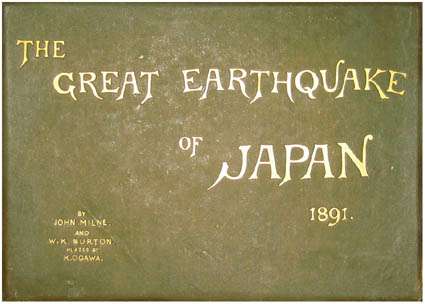
Milne, John (F.R.S. Professor of Mining and Geology, Imperial University of Japan)
Burton, W.K. (C.E. Professor of Sanitary Engineering, Imperial University of Japan)
Ogawa Kazumasa (Plates):
The Great Earthquake of Japan, 1891, Lane, Crawford & Co, Yokohama, plates by K. Ogawa, bound by N. Yubi, Tokyo, printed at the Tokyo Tsukiji Type Foundry, Tokyo, 2nd edition, ca 1893, 30 black and white plates with a total of 38 images, one lithograph map, horizontal large 4to (16 x 11 1/4 in - 40.5 x 28.5 cm), olive green cloth with gilt lettering on front board, beveled edges, 70 pp. Each plate is protected by a tissue guard with the plate number and a descriptive title. The images on the plates are large and generally measure 11 x 8 1/2 in (28.5 x 22 cm) or larger. The map is titled "Map of Japan - Lines of Volcanoes, Isoseismic Lines" and states "Engr. by K. Ogawa" at the bottom.
This is a scholarly illustrated discussion of the devastating earthquake that hit the Gifu/Aichi area of Japan at 6 o'clock in the morning of October 28, 1891. The first five pages describe the general earthquake situation in Japan. The next five pages deal with the 1891 earthquake. The plates then follow.
This earthquake, which was of a magnitude of 8.4, is sometime referred to as the Mino-Owari earthquake or the Nobi Earthquake. This earthquake is still considered to be the largest earthquake on land in the modern history of Japan and caused damage over a 4200 square mile area. The quake rocked Japan from Tokyo to Osaka, killing thousands (7,000+) of people. It was noted for the development of fault line ruptures which were traced on the surface for a distance of 50~80 meters and created, in places, vertical uplifts of as much as 20 ft. While most photographs in this book show the resulting devastation, a few vividly show the fault line and the displacement of the earth. The photographs also demonstrate that the modern Western style structures and infrastructure of Meiji era Japan seemed to withstand the quake no better than the wooden Japanese style buildings. It would be August 1, 1923 before Japan would again experience such wide spread earthquake related devastation and loss of life (140,000 killed) in the 8.3 magnitude Kanto quake.
Differences Between the 1st and 2nd Editions.
- Colophons. Neither book has a colophon.
- Title Pages. "Second Edition" is found in the title page of the second edition. The 1st edition title page states "with Plates by K. Ogawa." The 2nd edition states "plates by K. Ogawa" and omits the "with."
- Number of Plates.
~~ 1st edition contains 29 plates. It has two plates (II - LIFE AFTER THE EARTHQUAKE and XIX - BRIDGE IN NEO VALLEY) not found in the 2nd edition.
~~ 2nd edition contains 30 plates. It has three plates not found in the 1st edition (II - LIFE AFTER THE EARTHQUAKE, XVIII. - DAMAGED BRIDGES ON TOKAIDO RAILWAY and XX - IN NEO VALLEY. [Valley floor with dramatic uplift])
- Collation, Number and Sequence of Pages.
~~ 1st Edition. Title page, preface, contents, index of plates, text pages (10 numbered pages), 29 plates (each plate preceded by a tissue guard with a descriptive title and followed by a text page discussing the subject of the plate), 29 unnumbered text pages each accompanying a plate, lithograph map at the back. The table of contents incorrectly indicates states 71 pages. The accurate number (excluding the map) is 68 pages (10+29+29).
~~ 2nd Edition. Title page, preface, contents, index of plates, text pages (10 numbered pages), 30 plates (each plate preceded by a text page discussing the subject of the plate), 30 unnumbered text pages each accompanying a plate, a tissue guard with a descriptive title and finally the plate The table of contents correctly states 70 pages (10+30+30).
Note that the sequencing of the plates and the associated text page is reversed between the two editions. I believe that the primary reasons for the 2nd edition were to correct the inaccuracy in the contents page, rearrange the order of the text page and associated plate and add three plates not in the 1st edition.
- Prefaces. The prefaces vary slightly. The primary difference is in credits for the photographs used in the places. Click here to see the prefaces of both books.
Dating the Books. The books are undated. It is known that Ogawa, accompanied by Burton and Milne, toured the earthquake devastated Gifu region in December of 1891. Wenckstern states:
Milne, J. - The Great Earthquake of 1891. An album of 19 photographs by Prof. Burton, with 71 pp. descriptive letter press by the author and map of Japan. 1st & 2nd edition, oblong folio. Yokohama, 1892. (no reference to Ogawa)
The first edition was probably published in 1892 and the second edition was probably published early in 1893.
Plates.
- All the pages in this book (text, plates & map) are printed on a medium thickness slightly rough textured (ie flat/non-glossy) paper. While the paper is pliable, it has enough stiffness that it tends to crease easily. The thirty plates are printed into recessed areas on the paper. These plates are often described as collotypes. However, I do not believe they were produced by the collotype printing process. You do not see a texture of numerous fine curving irregular shaped lines (reticulation) which is the key indicator of a collotype print.
- At this time K. Ogawa's printing facilities were manufacturing very high quality halftone illustrations. These images are not what you typically envision from a half-tone process. They do not have the dot screen you normally associate with that type of reproduction. Instead the images are remarkably similar to those created by the higher quality collotype process for which Kazumasa Ogawa was widely respected. I believe that the images in this book were produced by a halftone process known as Meisenbach process.
- When this book was produced Ogawa & Burton were corroborating on another book, Ayame San, A Japanese Romance of the 23rd Year of Meiji (1890) (ca 1892, which used the Meisenbach halftone printing process. More information on that book is here. In that book, Burton stated "So far as I am aware this is the first book that has been illustrated with true half-tone photo-mechanical reproductions printed with the letter-press." In an 1895 article Burton described this in detail as the Meisenbach process.
- There is no specific reference in the book to the plates being collotypes. Many of the books during this time specifically noted the plates were collotypes. In the preface Burton states the following:
We think no apology is needed for the manner in which Mr. K. Ogawa has reproduced the photographs. We may mention that they are really permanent, in the sense that they will not fade in any length of time. They are as permanent as the paper that they are printed on. It may be worth mentioning that this very paper is a product of the Earthquake District, being manufactured only in Echizen. Indeed due to this fact, there has been some delay in the printing of the proofs, there having been difficulty in getting the paper to Tokyo. Preface
.
- Close-up of Plate Printing.
Close-up, Plate XIV
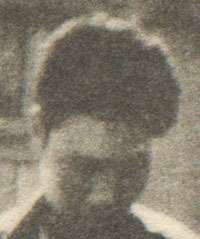
Creases in Plate Margins. Creasing in the left margin of the plates adjacent to the spin (outside the image area on the plate) is a normal condition. Since the images are printed in a recessed area on the plate, when a page is turned there is a tendency to create a vertical crease along the weak point created by the vertical portion of the recessed area on the left. The creases are also common in the left margin just outside the recessed area. I attribute this to the heavy weight of the long horizontal page being turned.
Details on 1st edition and 2nd edition.
Title Page
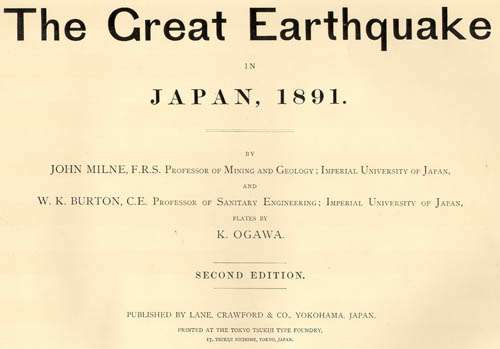
Table of Contents (For Text Pages)
THE GREAT EARTHQUAKE IN JAPAN 1
BIWAJIMA 11
KOYA LIFE 13
THE BANKS OF THE BIWAJIMA RIVER 15
BANK OF THE BIWAJIMA RIVER 17
BIWAJIMA BRIDGE 19
THE COTTON MILL AT NAGOYA 21
THE COTTON MILL AT NAGOYA 23
LIFE AFTER THE EARTHQUAKE 25
THE ROAD FROM NAGOYA TO GIFU 27
TWISTED RAILWAY LINE AND THE
KISOGAWA BRIDGE 29
LIFE AFTER THE EARTHQUAKE 31
BRIDGE NEAR BIWAJIMA, AND GIFU 33
HOSPITAL AT KURODA 25
HOSPITAL OF THE IMPERIAL UNIVERSITY 37
KASAMATSU 39
A TEMPORARY SHOP 41
KASAMATSU 43
BRIDGE NEAR THE KISOGAWA 45
NEODANI 47
THE NEO FAULT 49
NEAR ITASHU, NEODANI LANDSLIPS
IN NEODANI 53
NAGARA GAWA RAILWAY BRIDGE 55
NAGARA GAWA RAILWAY BRIDGE 57
APPROACH TO NAGARA GAWA RAILWAY BRIDGE 59
GENERAL VIEW OF THE NAGARA GAWA BRIDGE 61
NAGARA GAWA RAILWAY BRIDGE 63
LIFE AFTER THE EARTHQUAKE 65
LIFE AFTER THE EARTHQUAKE 67
EARTHQUAKE EFFECTS IN MANILA AND ITALY 69
PLATES (30) & MAP
I. BIWAJIMA.
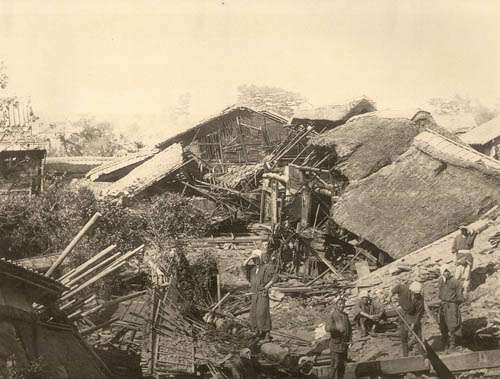 II. LIFE AFTER THE EARTHQUAKE.
II. LIFE AFTER THE EARTHQUAKE.
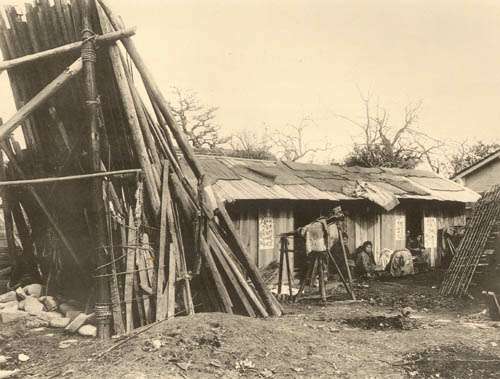 Photograph by Mr S. Aoyama of Nagoya
III. EMBANKMENT OF BIWAJIMA RIVER.
Photograph by Mr S. Aoyama of Nagoya
III. EMBANKMENT OF BIWAJIMA RIVER.
 IV. KOYA ON EMBANKMENT OF BIWAJIMA RIVER.
IV. KOYA ON EMBANKMENT OF BIWAJIMA RIVER.
 V. BIWAJIMA BRIDGE.
V. BIWAJIMA BRIDGE.
 VI. NAGOYA SPINNING MILL.
VI. NAGOYA SPINNING MILL.
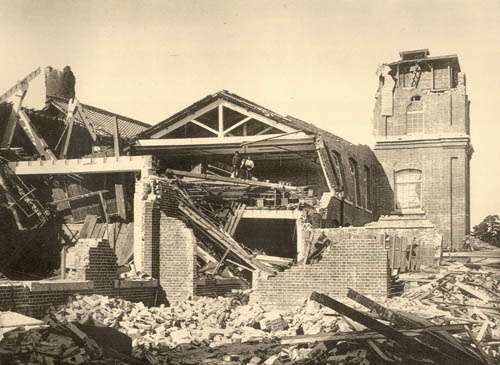 VII. NAGOYA SPINNING MILL.
VII. NAGOYA SPINNING MILL.
 VIII. LIFE AFTER THE EARTHQUAKE.
VIII. LIFE AFTER THE EARTHQUAKE.
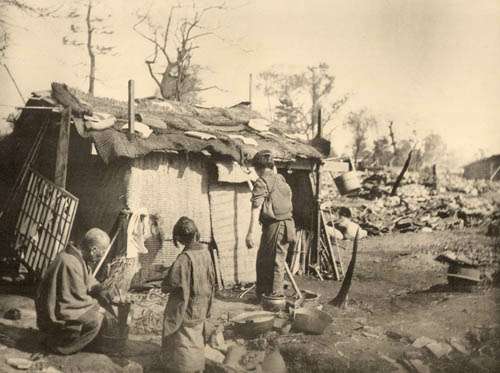 IX. ROAD FROM NAGOYA TO GIFU.
IX. ROAD FROM NAGOYA TO GIFU.
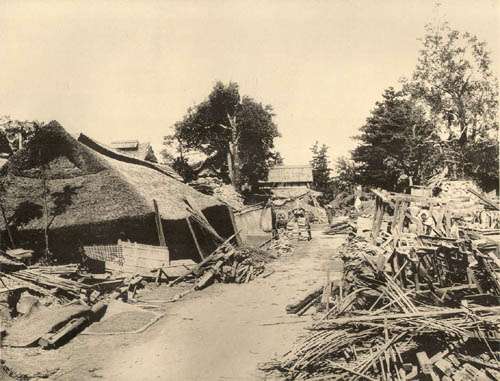 X. TWISTED RAILWAY LINE AND KISOGAWA RAILWAY
BRIDGE AFTER THE EARTHQUAKE.
X. TWISTED RAILWAY LINE AND KISOGAWA RAILWAY
BRIDGE AFTER THE EARTHQUAKE.
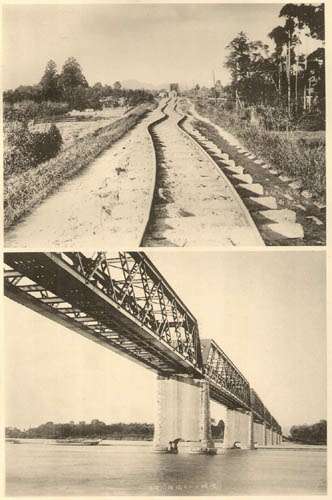 Photograph by Mr. Miyashita of Nagoya
XI LIFE AFTER THE EARTHQUAKE.
Photograph by Mr. Miyashita of Nagoya
XI LIFE AFTER THE EARTHQUAKE.
 XII. BIWAJIMA RAILWAY BRIDGE AND GIFU
AFTER THE EARTHQUAKE.
XII. BIWAJIMA RAILWAY BRIDGE AND GIFU
AFTER THE EARTHQUAKE.
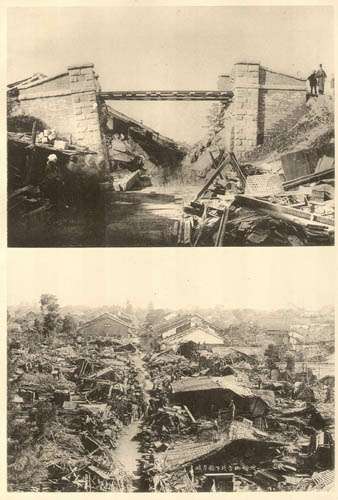 Photograph by Mr. Miyashita of Nagoya
XIII. IMPERIAL UNIVERSITY HOSPITAL.
Photograph by Mr. Miyashita of Nagoya
XIII. IMPERIAL UNIVERSITY HOSPITAL.
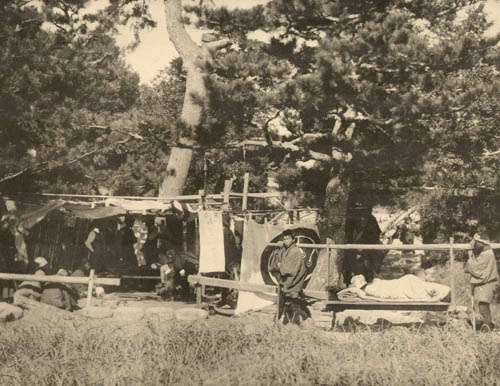 XIV. IMPERIAL UNIVERSITY HOSPITAL.
XIV. IMPERIAL UNIVERSITY HOSPITAL.
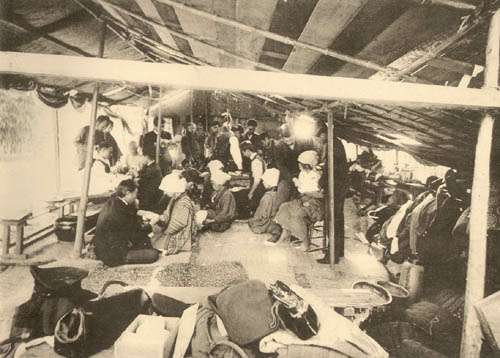 Photograph by Mr. Nakamura of Nagoya
Accompanying text page is printed front and back
XV. KASAMATSU.
Photograph by Mr. Nakamura of Nagoya
Accompanying text page is printed front and back
XV. KASAMATSU.
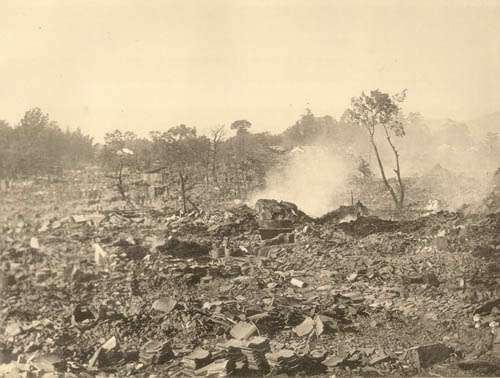 XVI. LIFE AFTER THE EARTHQUAKE.
XVI. LIFE AFTER THE EARTHQUAKE.
 XVII. KASAMATSU.
XVII. KASAMATSU.
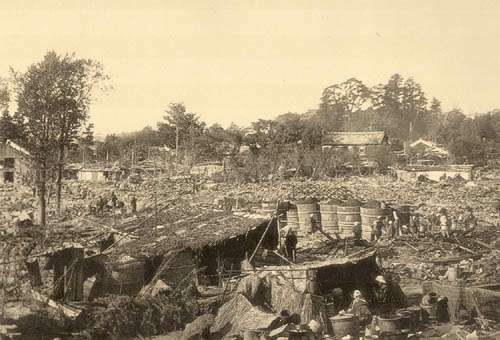 Photograph by Mr. Miyashita of Nagoya
XVIII. DAMAGED BRIDGES ON TOKAIDO RAILWAY.
Photograph by Mr. Miyashita of Nagoya
XVIII. DAMAGED BRIDGES ON TOKAIDO RAILWAY.
 XIX. BRIDGE IN NEO VALLEY.
XIX. BRIDGE IN NEO VALLEY.
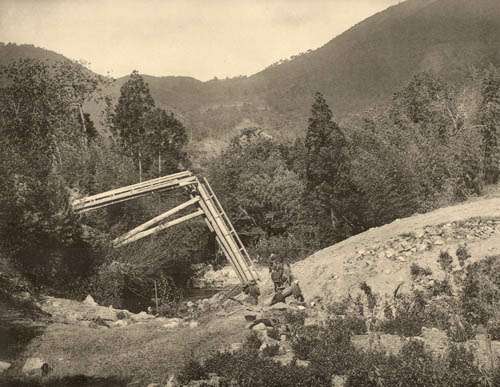 XX. IN NEO VALLEY.
XX. IN NEO VALLEY.
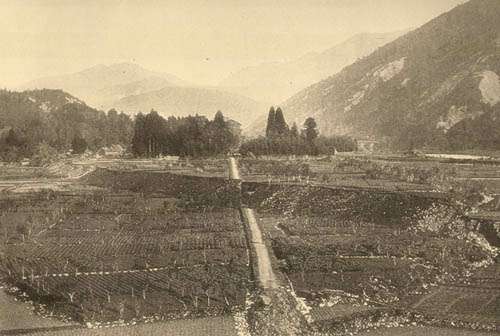 XXI. IN NEO VALLEY.
XXI. IN NEO VALLEY.
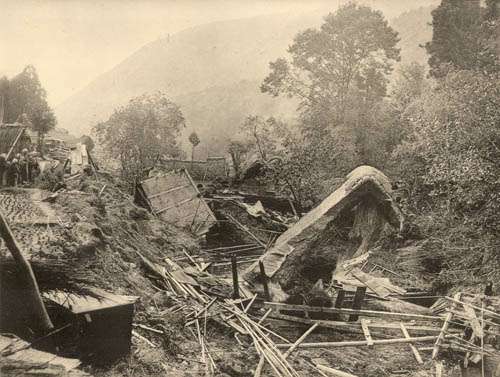 Photograph Mr. K. Kimbei of Yokohama
XXII. LANDSLIPS IN NEO VALLEY.
Photograph Mr. K. Kimbei of Yokohama
XXII. LANDSLIPS IN NEO VALLEY.
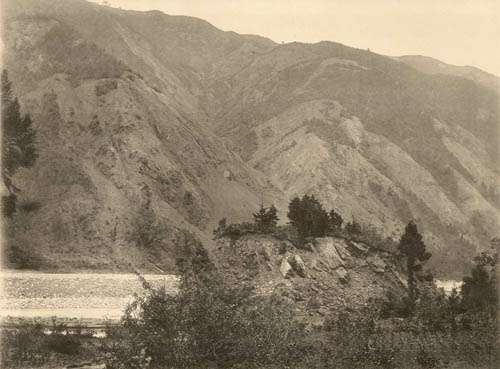 XXIII. NAGARA GAWA RAILWAY BRIDGE.
XXIII. NAGARA GAWA RAILWAY BRIDGE.
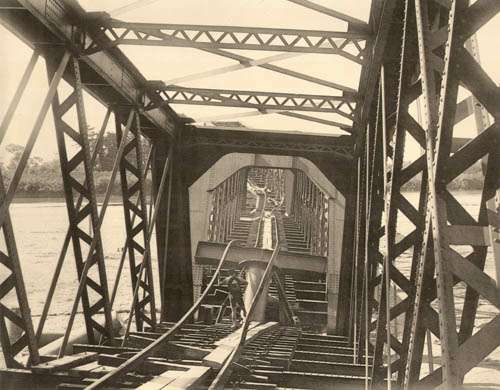 XXIV. NAGARA GAWA RAILWAY BRIDGE.
XXIV. NAGARA GAWA RAILWAY BRIDGE.
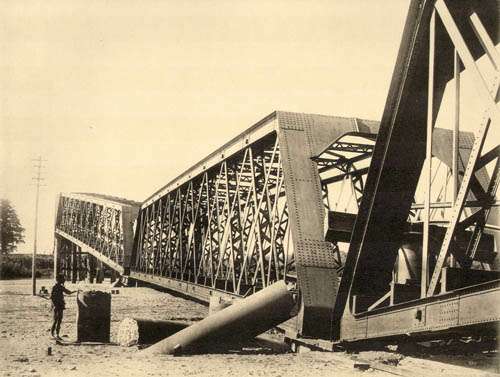 XXV. NAGARA GAWA RAILWAY BRIDGE.
XXV. NAGARA GAWA RAILWAY BRIDGE.
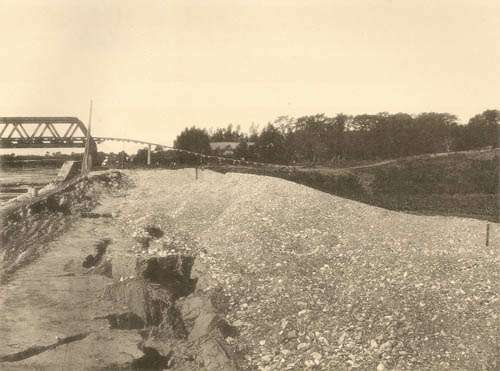 XXVI. NAGARA GAWA EMBANKMENT.
XXVI. NAGARA GAWA EMBANKMENT.
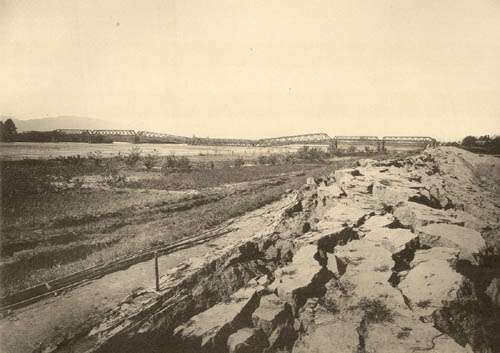 XXVII. NAGARA GAWA RAILWAY BRIDGE.
XXVII. NAGARA GAWA RAILWAY BRIDGE.
 XXVIII. LIFE AFTER THE EARTHQUAKE.
XXVIII. LIFE AFTER THE EARTHQUAKE.
 XXIX. LIFE AFTER THE EARTHQUAKE.
XXIX. LIFE AFTER THE EARTHQUAKE.
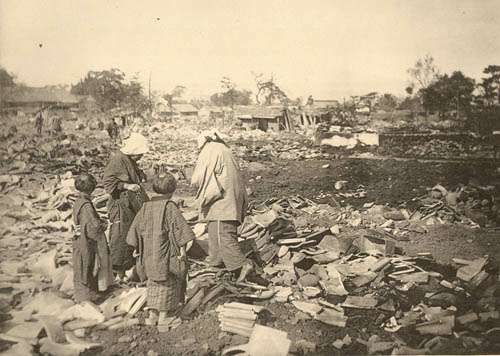 XXX. EFFECTS OF EARTHQUAKES IN ITALY AND MANILA.
XXX. EFFECTS OF EARTHQUAKES IN ITALY AND MANILA.
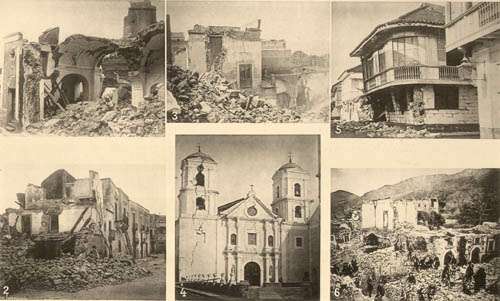 Accompanying text page is printed front and back
Map - "Map of Japan
Accompanying text page is printed front and back
Map - "Map of Japan
Lines of Volcanoes, Isoseismic Lines"
 "Engr. by K. Ogawa"
"Engr. by K. Ogawa"
N. Yubi, Tokyo - paste on lable, inside front cover
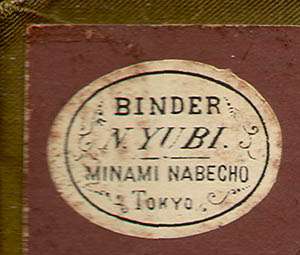
Listing of Plates (Without Images)
PLATES (2nd Edition)
* I. BIWAJIMA.
**** II. LIFE AFTER THE EARTHQUAKE.
* III. EMBANKMENT OF BIWAJIMA RIVER.
* IV. KOYA ON EMBANKMENT OF BIWAJIMA RIVER.
* V. BIWAJIMA BRIDGE.
* VI. NAGOYA SPINNING MILL.
* VII. NAGOYA SPINNING MILL.
* VIII. LIFE AFTER THE EARTHQUAKE.
* IX. ROAD FROM NAGOYA TO GIFU.
* X. TWISTED RAILWAY LINE AND KISOGAWA RAILWAY
BRIDGE AFTER THE EARTHQUAKE.
* XI LIFE AFTER THE EARTHQUAKE.
* XII. BIWAJIMA RAILWAY BRIDGE AND GIFU
AFTER THE EARTHQUAKE.
* XIII. IMPERIAL UNIVERSITY HOSPITAL.
* XIV. IMPERIAL UNIVERSITY HOSPITAL.
* XV. KASAMATSU.
* XVI. LIFE AFTER THE EARTHQUAKE.
[titled: TEMPORARY SHOP AFTER THE EARTHQUAKE. in 1st ed]
* XVII. KASAMATSU.
**** XVIII. DAMAGED BRIDGES ON TOKAIDO RAILWAY.
** XIX. BRIDGE IN NEO VALLEY.
**** XX. IN NEO VALLEY.
[Valley floor with dramatic uplift]
** XXI. IN NEO VALLEY.
** XXII. LANDSLIPS IN NEO VALLEY.
** XXIII. NAGARA GAWA RAILWAY BRIDGE.
** XXIV. NAGARA GAWA RAILWAY BRIDGE.
** XXV. NAGARA GAWA RAILWAY BRIDGE.
** XXVI. NAGARA GAWA EMBANKMENT.
** XXVII. NAGARA GAWA RAILWAY BRIDGE.
** XXVIII. LIFE AFTER THE EARTHQUAKE.
** XXIX. LIFE AFTER THE EARTHQUAKE.
** XXX. EFFECTS OF EARTHQUAKES IN ITALY AND
MANILA.
Comparison of Plates in the 1st and 2nd editions.
* Same plate in same sequence, 1st and 2nd editions.
** Same plate but different sequence, 1st and 2nd editions.
**** Only in 2nd edition.
Summary of Plates, 1st and 2nd Editions
Plates only in the 1st edition.
II. LIFE AFTER THE EARTHQUAKE.
(plates in 1st and 2nd editions are different)
XIX BRIDGE IN NEO VALLEY.
(only in the 1st edition)
Plates only in the 2nd edition.
II. LIFE AFTER THE EARTHQUAKE.
(plates in 1st and 2nd editions are different)
XVIII. DAMAGED BRIDGES ON TOKAIDO RAILWAY.
(only in 2nd edition)
XX. IN NEO VALLEY.
[Valley floor with dramatic uplift]
(only in 2nd edition)
Plates in both 1st and 2nd edition but slightly different numbers.
XX. IN NEO VALLEY (1st edition)
XXI. IN NEO VALLEY (2nd edition)
XXI. LANDSLIPS IN NEO VALLEY. (1st edition)
XXII. LANDSLIPS IN NEO VALLEY. (2nd edition)
XXII. NAGARA GAWA RAILWAY BRIDGE. (1st edition)
XXIII NAGARA GAWA RAILWAY BRIDGE. (2nd edition)
XXIII. NAGARA GAWA RAILWAY BRIDGE. (1st edition)
XXIV. NAGARA GAWA RAILWAY BRIDGE. (2nd edition)
XXIV. NAGARA GAWA RAILWAY BRIDGE. (1st edition)
XXV. NAGARA GAWA RAILWAY BRIDGE. (2nd edition)
XXV. NAGARA GAWA EMBANKMENT. (1st edition)
XXVI. NAGARA GAWA EMBANKMENT. (2nd edition)
XXVI. NAGARA GAWA RAILWAY BRIDGE. (1st edition)
XXVII. NAGARA GAWA RAILWAY BRIDGE. (2nd edition)
XXVIII. LIFE AFTER THE EARTHQUAKE. (1st edition)
XXIX. LIFE AFTER THE EARTHQUAKE. (2nd edition)
XXIX. EFFECTS OF EARTHQUAKES IN ITALY AND MANILA. (1st edition)
XXX. EFFECTS OF EARTHQUAKES IN ITALY AND MANILA. (2nd edition)
If not noted above, the same plate is found in the same sequence
in both editions.
For more information on Kazumasa Ogawa and his publications, click here.
John Milne (1850-1913), a British geologist, arrived in Japan in 1875 and became a Professor of Geology and Mining at the Imperial University of Japan, Tokyo in 1877. The earthquake of February 22, 1880 in Japan was a turning point in his professional life and he became more of a seismologist than geologist. In 1880 he was a founding member of the Seismological Society of Japan (Vice President) which published the first Transactions of the Seismological Society of Japan covering the period from April-June of 1880. He was a major contributor to the published proceedings of the society. Milne has the distinction of being considered one of the founding fathers of modern seismology and the inventor of the modern seismograph capable of continuous recording. Milne had a particular interest in the relationship of earthquakes and volcanoes. He eventually concluded that earthquakes were not caused by volcanoes but rather they were primarily the result of a build up of energy in rocks caused by deformation of the earth's crust. Milne's interests also extended into the history of Japan as revealed in the archaeology evidence. He was a friend of the American zoologist Edward Sylvester Morse although his opinions on stone age Japan differed considerably from those of Morse. In February of 1895 an earthquake destroyed most of Milne's instruments, books and possessions. Disheartened by this situation, he left Japan after a 20 year stay and returned to England where lived on the Isle of Wright. While in Japan, Milne co-authored The Great Earthquake of Japan, 1891 (1892) and The Volcanoes of Japan, Part 1, Fuji-san (ca 1892) (both J. Milne, W.K. Burton, K. Ogawa plates, printed by the Tokyo Tsukiji Type Foundry). While in England, he co-authored an important textbook on earthquakes with W.K. Burton (Earthquakes and Other Earth Movements, 1898). Milne also published many scholarly works on seismology while in Japan and is best remembered for his works on earthquakes, volcanoes and tsunamis. In Wenckenstern one finds numerous entries relating to Milne's publications as a geologist/seismologist.
W.K. Burton
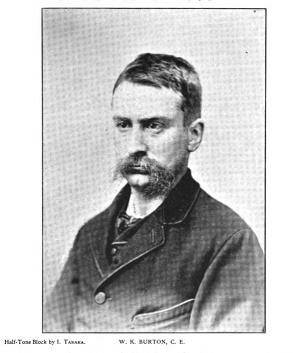
Anthony's Photographic Bulletin,
Volume XXVII, 1896
William Kinninmond Burton (1856-1899), a Scottish engineer, arrived in Japan in 1887 and immediately became a Professor of Sanitary Engineering at Imperial University of Japan, Tokyo. He helped design the water and sewage systems that would take Tokyo and other Japanese cities into the 20th century. He designed the Ryounkaku which is considered to be the first Japanese sky scraper. This 12 story, 220 foot tall, building in Asakusa was the tallest building in Tokyo at the time it opened in 1890. Burton was an avid photographer and noted expert in the technical aspects of photography. He published several technical works on photography. Burton had a close association with Kazumasa Ogawa, the noted Japanese photographer and collotype printer. Along with Kazumasa Ogawa, Burton was a founding member of the Japan Photographic Society (Nihon Shashinkai), Japan's first organization for amateur photographers. Burton left Japan in 1896 and went to Taiwan but returned in 1899 where he died at the age of 43.
Works authored by Burton or with his photographs include:
- 1892, K. Ogawa, Kusakabe Kimbei, W. K. Burton & James Murdoch,The Hakone District, Illustrated by K. Ogawa, Photographer, in Collotype With Descriptive Text by James Murdoch, M.A., Tokyo, K. Ogawa, Meiji 25 (1892), folio (12 x 16 in - 30.2 x 40.5 cm), decorated card covers, spine covered with cloth, string ties, 1 map in color (chromolithograph), 17 collotype plates with a total of 26 different images. Three plates have 4 images and 14 plates have a single image. For more information on this book, click here.
- 1892, Sights and Scenes on the Tokaido, Tokyo, K. Ogawa, Folio, 1 page preface, 4 pages of introduction, 20 black and white collotype plates, 22 pages of descriptive text, total of 47 pp. The 20 black and white collotype plates contain a total of 44 images. Twelve plates have a single image and 8 plates have 4 images each. Each page is protected by a tissue guard giving the plate number. There is no descriptive text on the plate or tissue guard. The images are based upon photographs by Kazumasa Ogawa, Kusakabe Kimbei, Adolfo Farsari and William K. Burton. Each plate is preceded by a one to two page description of the significance of the image that follows. Contains a colophon dating the book to Meiji 25 (1892). Also sold in painted wooden box. For more information on this book, click here.
- ca 1892, J. Murdoch (A.M.) and W. K. Burton, Ayame-san, A Japanese Romance of the 23rd Year of Meiji (1890), Yokohama, Kelly & Walsh, London, Sampson Low, Marston & Company, Ltd and London, Walter Scott, 8vo (6 x 9 in), cardboard covers with paste on paper illustrated paper, cloth covered spine, photographs taken primarily by Kazumasa Ogawa and W. K. Burton, 77 text illustrations, 3 of which are full page, 2 pp errata, 310 pp. Some sold in a wooden box. For more information on this book, click here
- ca 1892, John Milne and W.K. Burton, The Volcanoes of Japan, Part 1, Fujisan, Yokohama, Kelly & Walsh, Yokohama, Shanghai, Hongkong and Singapore, printed at the Tokyo Tsukiji Type Foundry, collotypes by K. Ogawa, horizontal large 4to (11 1/4 x 15 1/2 in - 28.8 x 39.5 cm), undated but ca 1892, no colophon, pale green card covers, staple bound with spine uncovered, 10 tissue guard protected black and white collotype plates, 32 pp. For more information on this book, click here.
- ca 1892, W. K. Burton and John Milne, The Great Earthquake of Japan, 1891, Yokohama, Lane, Crawford & Co., printed at the Tokyo Tsukiji Type Foundry, 1st edition, green cloth with gilt lettering, oblong 4to (29 x 41 cm), green cloth with gilt, 30 black and white K. Ogawa plates and a lithographic map, plates protected tissue guards with descriptive titles, 71 pages indicated in the table of contents.
- ca 1893, W. K. Burton and John Milne, The Great Earthquake of Japan, 1891, Yokohama, Lane, Crawford & Co., printed at the Tokyo Tsukiji Type Foundry, 2nd edition, green cloth with gilt lettering, oblong 4to (29 x 41 cm), green cloth with gilt, 29 black and white K. Ogawa plates and a lithographic map, plates protected tissue guards with descriptive titles, 70 pp. For more information on this book, click here.
- ca 1893, W. K. Burton (photographs), J. Murdoch (text), K. Ogawa (plates), Scenes from Open Air Life in Japan, Photographed by W. K. Burton, Plates by K. Ogawa, Text by J. Murdoch, large 4to (11 x 15 1/2 in - 28.2 x 39 cm), color woodblock illustrated stiff covers with silk covered spine, two multi-color silk ties (blue, red and white) which each pass through four holes, gold illustrations inside the front and back covers, introduction (1 unnumbered page), 18 number pages of letterpress text, 14 black and white collotype plates with descriptive captions printed below the image. Undated but listed in the library (catalogued July 31, 1893) of the Japan Society, London, Transactions and Proceedings, Volume I, 1893. Also dated to 1893 by Wenckstern. For more information on this book, click here.
- ca 1893, J. Murdoch and W.K. Burton, Out-Door Life in Japan, Yokohama, photographs by W.K. Burton, text by J. Murdoch, printed by K. Ogawa, 8vo, 2 photographs per page, 25 pp. Undated but listed in the library (catalogued July 31, 1893) of the Japan Society, London, Transactions and Proceedings, Volume I, 1893.
- 1895, W. K. Burton, Wrestlers and Wrestling in Japan with an Historical and Descriptive Account by J. Inouye, 1895, 4to, 12 collotype plates by K. Ogawa, 18 pp. Reported with black and white collotypes and with colored collotypes.
- 1892, W. K. Burton, Practical Guide to Photographic and Photo-Mechanical Printing. Second Edition, Revised and Enlarged, London, Marion & Co, printed by R.R. Clark, Edinburgh, large 12mo, red cloth with black decoration and lettering on front cover and spine, numerous text illustrations, 415 pp + 46 pp of illustrated ads for Marion & Co products. An important handbook including an historical sketch of photographic printing processes and photo-mechanical printing processes. The book contains extensive and technical sections on silver printing, platinotype process, printing with salts of uranium, contact printing, mounting of prints, carbon processes, a wide variety of modern photo-mechanical printing processes (Woodbury, Stannotype, photo-lithography, collotype process, halftone processes). The book offers an important insight into the types of printing work being performed in Japan by K. Ogawa at this point in time. When living in England, W. K. Burton was also the author of an earlier publication on photography, The A.B.C. of (Modern) Photography, London, Piper & Carter, 4th edition, 1884, a 124 page booklet which is described as "a manual of photography for beginners on the assumption that the gelatine process is now the process of the day." In an edition of this book published ca 1887 Burton, comments on the gallery of A. Farsari and Co. in Yokohama and the colorization of photographs done in there. For more information on the 1892 guide, click here.
A Bibliography of the Japanese Empire, Being a Classified List of all Books, Essays and Maps in European languages relating to Dai Nihon [Great Japan], Published in Europe, American and in the East from 1859-93 A.D. [VIth year of Ansei -- XXVIth of Meiji] compiled by Fr. Von Wenckstern To which is added a facsimile-reprint of: Leon Pages, Bibliographie Japonaise depuis le XVe siecle jusqua 1859. (1895)
|





 Photograph by Mr S. Aoyama of Nagoya
III. EMBANKMENT OF BIWAJIMA RIVER.
Photograph by Mr S. Aoyama of Nagoya
III. EMBANKMENT OF BIWAJIMA RIVER.

 V. BIWAJIMA BRIDGE.
V. BIWAJIMA BRIDGE.

 VII. NAGOYA SPINNING MILL.
VII. NAGOYA SPINNING MILL.
 VIII. LIFE AFTER THE EARTHQUAKE.
VIII. LIFE AFTER THE EARTHQUAKE.
 IX. ROAD FROM NAGOYA TO GIFU.
IX. ROAD FROM NAGOYA TO GIFU.


 XII. BIWAJIMA RAILWAY BRIDGE AND GIFU
AFTER THE EARTHQUAKE.
XII. BIWAJIMA RAILWAY BRIDGE AND GIFU
AFTER THE EARTHQUAKE.

 XIV. IMPERIAL UNIVERSITY HOSPITAL.
XIV. IMPERIAL UNIVERSITY HOSPITAL.

 XVI. LIFE AFTER THE EARTHQUAKE.
XVI. LIFE AFTER THE EARTHQUAKE.
 XVII. KASAMATSU.
XVII. KASAMATSU.


 XX. IN NEO VALLEY.
XX. IN NEO VALLEY.

 Photograph Mr. K. Kimbei of Yokohama
XXII. LANDSLIPS IN NEO VALLEY.
Photograph Mr. K. Kimbei of Yokohama
XXII. LANDSLIPS IN NEO VALLEY.
 XXIII. NAGARA GAWA RAILWAY BRIDGE.
XXIII. NAGARA GAWA RAILWAY BRIDGE.
 XXIV. NAGARA GAWA RAILWAY BRIDGE.
XXIV. NAGARA GAWA RAILWAY BRIDGE.

 XXVI. NAGARA GAWA EMBANKMENT.
XXVI. NAGARA GAWA EMBANKMENT.


 XXIX. LIFE AFTER THE EARTHQUAKE.
XXIX. LIFE AFTER THE EARTHQUAKE.

 Accompanying text page is printed front and back
Map - "Map of Japan
Accompanying text page is printed front and back
Map - "Map of Japan
